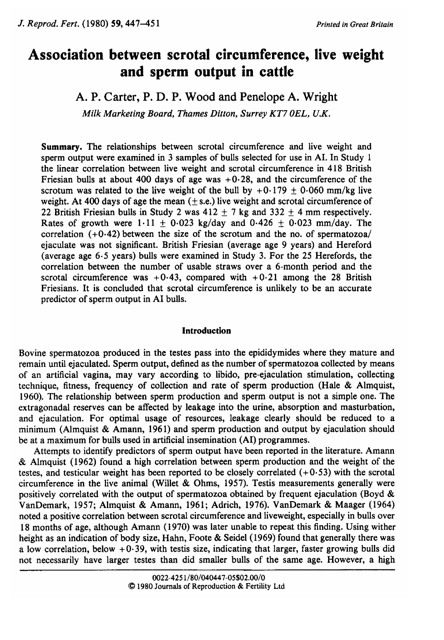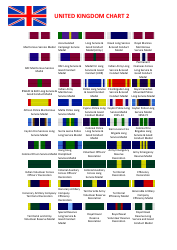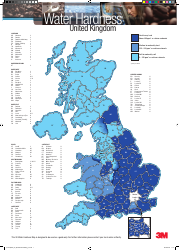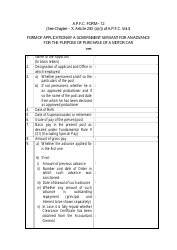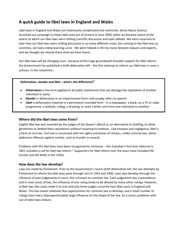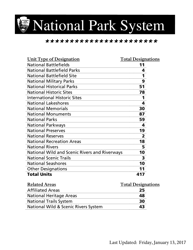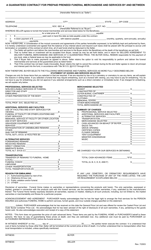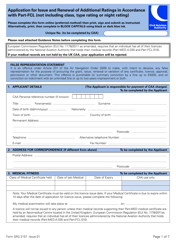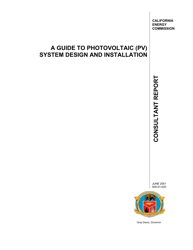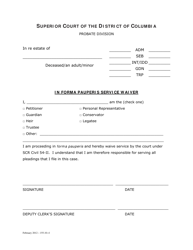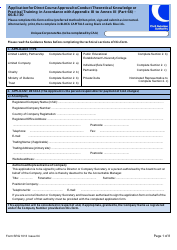Association Between Scrotal Circumference, Live Weight and Sperm Output in Cattle - a. P. Carter, P. D. P. Wood and Penelope a. Wright - United Kingdom
The document titled "Association Between Scrotal Circumference, Live Weight and Sperm Output in Cattle" by A.P. Carter, P.D.P. Wood, and Penelope A. Wright from the United Kingdom, focuses on studying the relationship between scrotal circumference, live weight, and sperm output in cattle. The authors aim to explore the correlation between these variables to gain a better understanding of their interplay and how they may affect cattle reproductive performance.
FAQ
Q: What is the association between scrotal circumference, live weight, and sperm output in cattle?
A: The association between scrotal circumference, live weight, and sperm output in cattle is studied in a research paper titled 'Association Between Scrotal Circumference, Live Weight and Sperm Output in Cattle' by A.P. Carter, P.D.P. Wood, and Penelope A. Wright.
Q: Who are the authors of the research paper?
A: The authors of the research paper are A.P. Carter, P.D.P. Wood, and Penelope A. Wright.
Q: What is scrotal circumference?
A: Scrotal circumference is the measurement of the circumference of the scrotum, which is the external sac that contains the testicles in male cattle.
Q: What is live weight?
A: Live weight refers to the weight of an animal while it is alive, without any processing or dressing.
Q: What is sperm output?
A: Sperm output refers to the quantity of sperm produced by male cattle.
Q: What was the objective of the study?
A: The objective of the study was to investigate the association between scrotal circumference, live weight, and sperm output in cattle.
Q: What were the findings of the study?
A: The specific findings of the study are not mentioned in the document provided. The research paper would need to be reviewed to obtain the detailed findings.
Q: Why is studying the association between scrotal circumference, live weight, and sperm output important?
A: Studying the association between scrotal circumference, live weight, and sperm output in cattle is important for understanding reproductive health and fertility in male cattle, which can have implications for breeding programs and overall herd management.
Q: Is this study applicable to cattle in the United States?
A: While the study was conducted in the United Kingdom, the findings may have relevance to cattle in the United States as well. However, it is important to consider regional variations and consult additional research in the specific context of US cattle.
